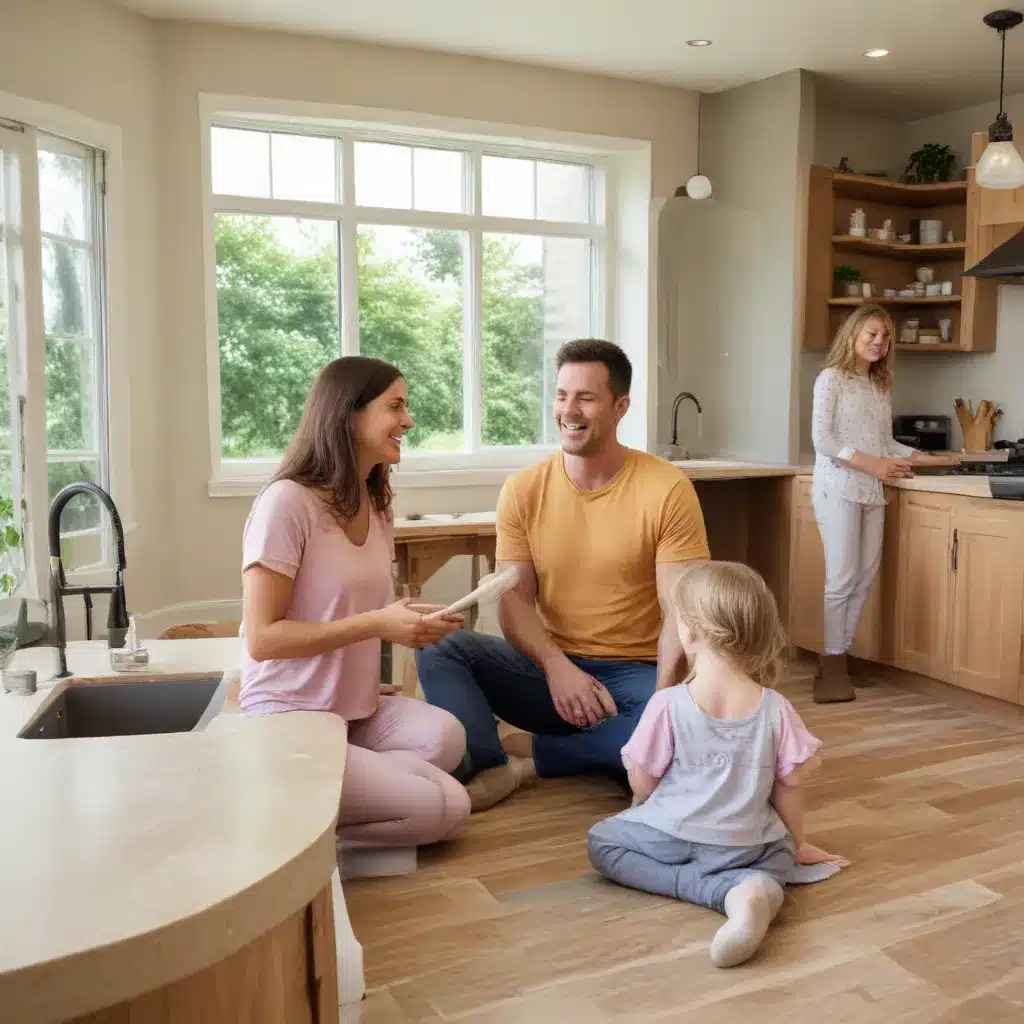
Renovation Wellness: Designing Healthy Homes for Families
Creating a home that supports the physical, mental, and emotional wellbeing of your family is essential, yet often overlooked during the renovation process. As an experienced home improvement consultant, I’m here to guide you through the key strategies for designing a wellness-focused home that nurtures your family’s health and the health of our planet.
Holistic Approach to Healthy Living
Designing a truly healthy home requires an integrated approach that considers the interconnected elements of human and environmental wellness. It’s not enough to simply focus on a single aspect like indoor air quality or sustainable materials – a holistic renovation plan must address the full spectrum of wellbeing.
At the core of this approach are two key principles: lifestyle considerations and integrated design. By first understanding your family’s unique needs, preferences, and daily routines, we can then create a home environment that seamlessly supports and enhances your overall quality of life. This means looking at factors like multigenerational living, accessibility, fitness, and mental health – and designing spaces that cater to these real-world requirements.
Equally important is the integration of wellness-focused design elements throughout the renovation plan. Rather than treating health and sustainability as afterthoughts, we’ll weave these considerations into every aspect of the project, from material selection to space planning to technological integration. The end result is a harmonious, holistic home that nurtures your family’s wellbeing.
Sustainable Materials and Construction
One of the most crucial elements of a healthy home renovation is the selection of eco-friendly, non-toxic materials. Many common building products contain harmful chemicals, heavy metals, and other pollutants that can have adverse effects on indoor air quality and human health. By carefully vetting our material choices, we can create a home environment that is free from these hazards.
Some sustainable material options to consider include:
– Natural flooring: Hardwood, bamboo, cork, or resilient linoleum
– Low-VOC paints and finishes: Look for products certified as “green” or “low-emitting”
– Formaldehyde-free cabinetry and countertops: Opt for solid wood, quartz, or engineered stone
– Insulation with high R-values: Mineral wool, cellulose, or rigid foam boards
Beyond the materials themselves, the construction methods used can also impact a home’s wellness. Minimizing construction waste, sourcing locally, and implementing airtight building envelope strategies all contribute to a more sustainable, energy-efficient, and healthier final product.
Ergonomic Layouts and Functionality
The way a home is laid out and organized can have a profound effect on the daily lives of its occupants. By focusing on ergonomic design principles and optimized functionality, we can create spaces that streamline routine tasks, promote movement, and accommodate the needs of all family members.
Some key considerations for family-friendly floor plans include:
– Accessible entryways: Eliminating steps or thresholds for easy access
– Wide doorways and hallways: Allowing for mobility devices and furniture maneuvering
– Single-level living: Minimizing the need for stairs or elevators
– Centralized laundry and storage: Reducing unnecessary travel within the home
These design choices not only enhance convenience and accessibility, but they also support aging-in-place and accommodate the evolving needs of a growing family. By prioritizing functionality alongside aesthetic considerations, we can craft a home that truly serves your family’s best interests.
Wellness-Focused Amenities
Beyond the foundational elements of a healthy home, specialized amenities can further elevate the wellbeing of your family. These can include dedicated spaces for fitness, relaxation, and restorative activities – all designed to promote both physical and mental health.
Some examples of wellness-enhancing features include:
– Home gyms or yoga studios: Providing dedicated areas for exercise and movement
– Meditation nooks or quiet retreats: Creating calming, nature-inspired spaces for mindfulness
– Sensory gardens or biophilic design: Incorporating elements of nature to reduce stress and boost mood
– Strategically placed windows and skylights: Optimizing natural light to regulate circadian rhythms
By weaving these purposeful wellness features into the fabric of your home, you can transform its daily impact on your family’s health and happiness. The end result is a sanctuary that not only looks beautiful, but also actively nurtures your wellbeing.
Designing for Family Wellbeing
While the principles of healthy home design benefit all occupants, it’s crucial to also consider the unique needs and dynamics of a family-centric living environment. From multigenerational accommodations to child-friendly spaces, a truly wellness-focused renovation must address the diverse requirements of each family member.
One key aspect is adaptability and longevity. By incorporating aging-in-place features and designing for evolving needs, we can create a home that grows and adapts with your family over time. This might include things like zero-threshold showers, wider doorways, and first-floor bedroom suites – ensuring your home remains accessible and functional, no matter how your circumstances change.
Equally important is fostering an environment that encourages active lifestyles and promotes mental wellbeing. This could involve dedicated fitness areas, outdoor play spaces, or even technology-free zones that nurture mindfulness and quality family time. By purposefully designing for both physical and emotional wellness, we can cultivate a home that truly supports the holistic health of your loved ones.
Ultimately, the goal of a wellness-focused renovation is to create a home that not only looks beautiful, but also actively enhances the daily lives of your family. By integrating sustainable materials, ergonomic functionality, and wellness-boosting amenities, we can craft a sanctuary that feels like a true haven – a place where your loved ones can thrive, both individually and together.
Whether you’re embarking on a large-scale renovation or simply looking to make targeted improvements, I’m here to guide you through the process of designing a healthy, sustainable, and family-centric home. By taking a holistic approach to renovation wellness, we can create a living environment that supports your family’s wellbeing for years to come. To get started, I encourage you to explore the wide range of healthy home design resources available on Reluctant Renovator – and let’s work together to bring your dream home to life.



